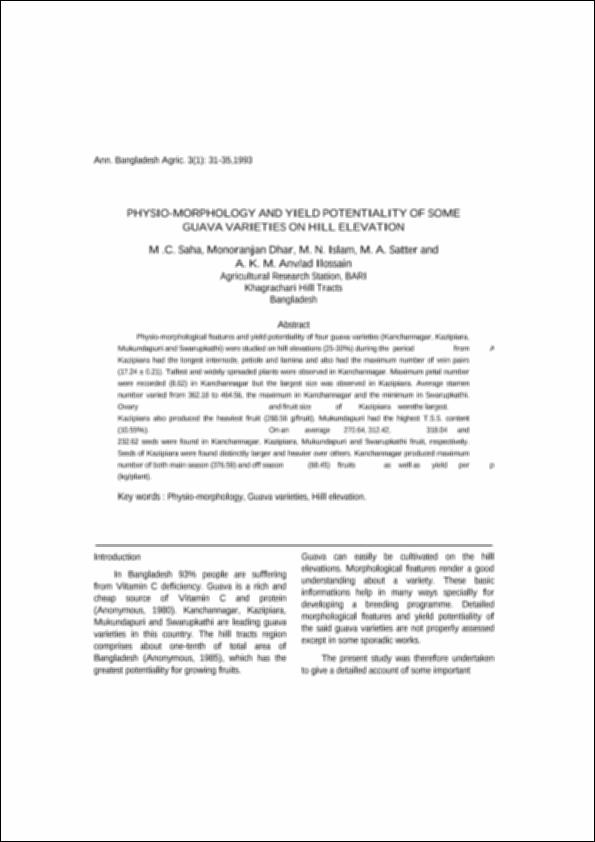| dc.description.abstract | Abstract :
Physio-morphological features and yield potentiality of four guava varieties (Kanchannagar, Kazipiara, Mukundapuri and Swarupkathi) were studied on hill elevations (25-30%) during the period from April, 1990 to March, 1991.
Kazipiara had the longest internode, petiole and lamina and also had the maximum number of vein pairs (17.24 ± 0.21). Tallest and widely spreaded plants were observed in Kanchannagar. Maximum petal number were recorded (8.62) in Kanchannagar but the largest size was observed in Kazipiara. Average stamen number varied from 362.18 to 464.56, the maximum in Kanchannagar and the minimum in Swarupkathi. Ovary and fruit size of Kazipiara were the largest.
Kazipiara also produced the heaviest fruit (268.56 g/fruit). Mukundapuri had the highest T.S.S. content (10.55%). On an average 270.64, 312.42, 318.04 and
232.62 seeds were found in Kanchannagar, Kazipiara, Mukundapuri and Swarupkathi fruit, respectively. Seeds of Kazipiara were found distinctly larger and heavier over others. Kanchannagar produced maximum number of both main season (376.59) and off season (68.45) fruits as well as yield per plant
(kg/plant). | en_US |

